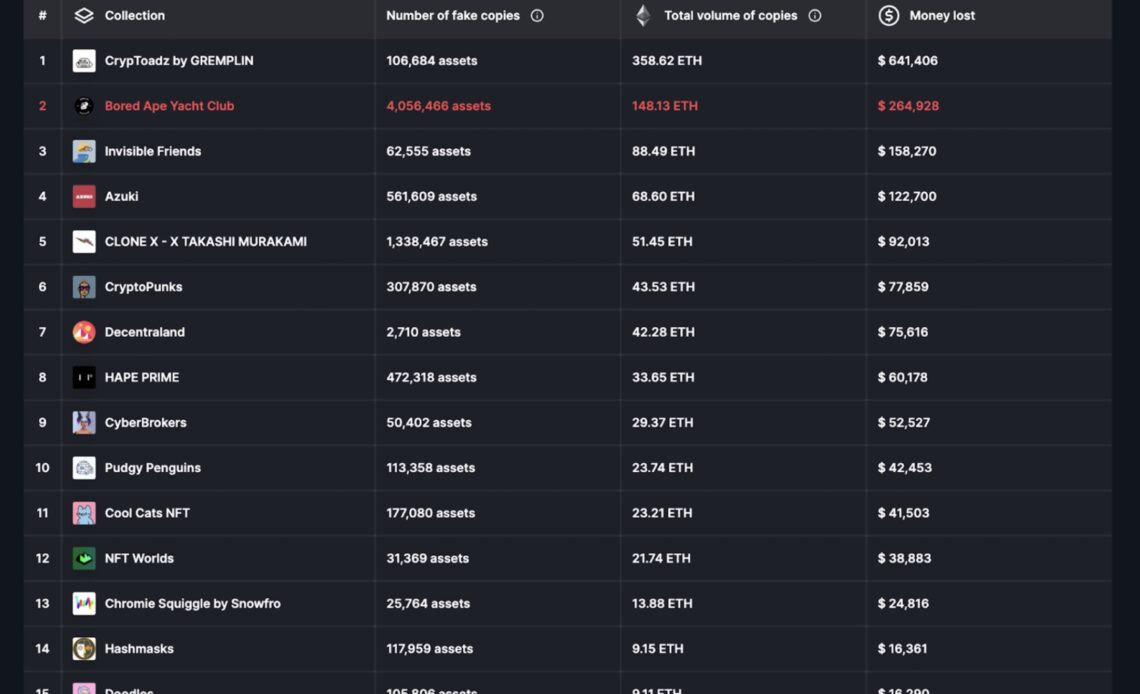Beyond all the good a permissionless internet promises, it also makes it convenient for anyone to freely mint pirated nonfungible tokens (NFTs). There are in fact over 90 million fake copies of NFTs. Because in a permissionless system, what’s to stop bad actors from creating copymints to scam unsuspecting users or damage a brand’s reputation?
Only the top 20 most copied NFT projects account for 8 million fake copies across NFT marketplaces.
Since NFTs are valuable only because of their uniqueness, such copycat NFTs are fundamentally worthless for consumers. They imply a massive reputational cost besides financial loss for buyers and creators. This is particularly detrimental to a nascent and emerging industry like NFTs.
The “nonfungibility” and rarity of NFT assets are pivotal to their value proposition. These are the qualities bringing long-term adopters to this domain. But although the on-chain “token” itself may be unique and nonfungible, the content mapped to it through metadata can be tampered with, replaced or even removed. This is among the key technical challenges facing NFT innovators today.
Related: Cryptocurrency miners are leading the next stage of AI
It’s apparent now that NFT marketplaces need to step up to protect consumer and creators’ interests against copyminting, forgery and intellectual property violations.
But the big question for them is: How do you protect users from copymints while keeping the ethos of a permissionless and decentralized internet intact?
Copyminting has grown alongside NFTs
NFT sales counts topped 101 million in 2022, nearly 67% higher than in 2021 despite widespread bearish trends. The total monthly NFT trading volume reached $1 billion across marketplaces in January 2023, and the industry is on track to become a $231-billion market by 2030. NFT trademark filings also scaled new heights in 2022, further illustrating the industry’s rapid growth. But the demand for NFTs is growing not just among adopters but also among malicious actors.
Copyminting is among the most common scams involving NFTs. This method involves attackers deceiving buyers into thinking that their collection is original. Whereas in reality, it’s merely a copy or rip-off of another NFT, albeit a popular one. For example, Bored Ape Yacht Club has 10,000 original NFTs and more than 4 million counterfeit NFTs.
Most often, copymints simply make minor tweaks to the original collection, such as highlighting, mirroring,…
Click Here to Read the Full Original Article at Cointelegraph.com News…
























